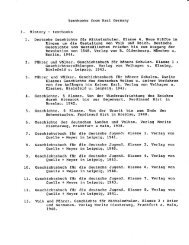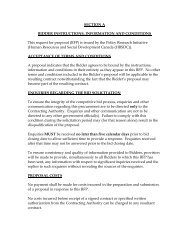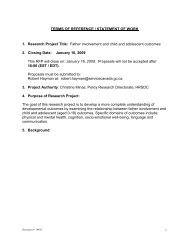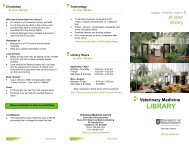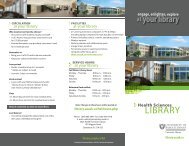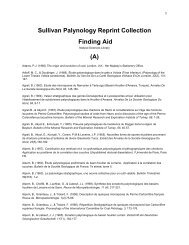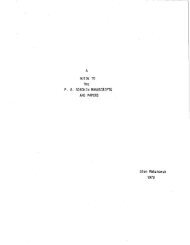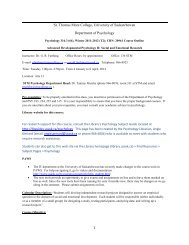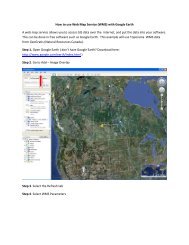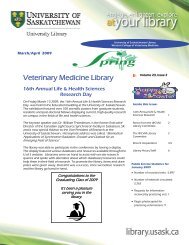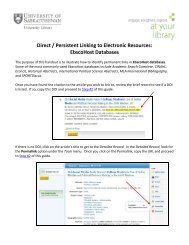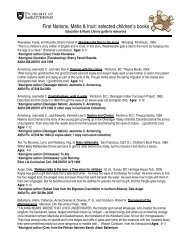T1 - University Library - University of Saskatchewan
T1 - University Library - University of Saskatchewan
T1 - University Library - University of Saskatchewan
You also want an ePaper? Increase the reach of your titles
YUMPU automatically turns print PDFs into web optimized ePapers that Google loves.
Appendix B: Assignments<br />
A. First Assignment (10%): Working toward a thesis.<br />
Your first assignment is intended to be a bridge toward your second assignment which is a<br />
term paper. Below, I give a definition <strong>of</strong> a thesis, demonstrate a plan <strong>of</strong> working toward a thesis<br />
statement, elaborate by giving examples and then give your first assignment.<br />
Definition <strong>of</strong> a thesis: A persuasive thesis is a declarative statement or proposition which is<br />
advanced for consideration, especially one that is to be proved or maintained against objections.<br />
The author is taking a stand, is making an argument, and is hoping to form the reader’s<br />
understanding <strong>of</strong> research (in our case, a developmental phenomenon). It is an idea that controls<br />
and shapes your paper. It is exactly what your paper is about. It is what you intend to demonstrate<br />
and everything in your paper should contribute toward your intention. It helps you set aside<br />
interesting but not centrally relevant ideas. At the end, the reader should be prepared to change<br />
his or her views about the topic or develop a view if, indeed, no view was had before the<br />
argument.<br />
Remember that, before they have read very far, readers <strong>of</strong> academic papers want to know what<br />
the paper argues as well as how the author plans to make the argument. The academic reader<br />
likely thinks, “This author is trying to convince me <strong>of</strong> something. Either I am already convinced<br />
or unsure. In any case I am interested to see how I might be further convinced or change my<br />
mind.”<br />
A thesis is not a topic. It is not a fact. It is not an opinion. It can not be answered by a simply<br />
“yes” or “no”. It has two parts: a) what you plan to argue and b) telegraph how you plan to argue<br />
it (or what kind <strong>of</strong> support is going to appear where in your argument).<br />
Steps in Constructing a good thesis:<br />
1. Carefully analyze your primary sources. Look for tensions, ambiguities, contradictions,<br />
controversies or deeper meanings. Document them.<br />
2. Write down your thought as soon as you think them. Your next idea may wreck your idea<br />
or cause you to lose concentration. Writing forces you to think clearly, logically, and<br />
concisely. You can revise your writing anytime. Revision clarifies thinking even more.<br />
3. Make your thesis prominent in your introduction <strong>of</strong> your paper. A good place in 10-15<br />
page papers is at the end <strong>of</strong> the first paragraph. Academics are used to finding theses there<br />
so they anticipate it well. They usually pay more attention to the last sentence <strong>of</strong> the<br />
introductory paragraph.<br />
4. Try to anticipate counter-arguments to your thesis. What might be said against it? What<br />
arguments might you need to refute later in you paper. Remember that every argument<br />
has a counter argument or it would not be an argument! Instead it would be a fact,<br />
opinion or a topic.<br />
10



